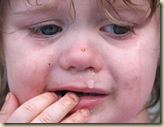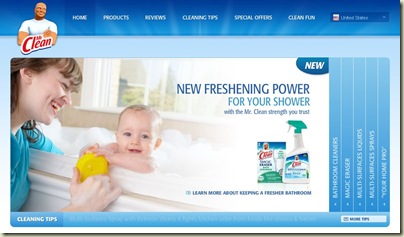Today’s post presents the challenge of writing when beach and ocean lie just across a boulevard. Yours truly sat in a subterranean conference room all day, learning about a clinical trial protocol, while the paradise that is beachfront Fort Lauderdale beckoned. The

tribulations I endure for my patients!
Events such as this were distinctly uncommon in years past. Today we will stroll through a brief history of pediatric clinical trials in the United States. After this walk in the woods of regulatory affairs, you will agree that my current endeavor amazes!
All about white males
For a long time, medical care and clinical experimentation had no regulation! Children were subjected to experimentation without consent or assent during this time, as were adults. The best history of the evolution of clinical research regulation can be found in
The Immortal Life of Henrietta Lacks
(which I
previously reviewed). Over the years, the public demanded better protection for human research subjects; vulnerable populations, including women, children, prisoners, and the mentally incapacitated, presented special problems for enrollment. Women could become pregnant, resulting in an “adverse event” with a fetus, perhaps yielding death or life-long disability, a risk not many drug companies are willing to bear. Most children enjoy good health, so marketing chronic medications to them provides little financial benefit to a drug company (certainly not enough to justify study as required by regulatory bodies). Thus, through the 1970s, women and children had few studies performed, aside from drugs directed specifically to their group.
Ethnic and racial minorities presented other challenges (once again, see the
HeLa book for more discussions; I can't imagine why you haven't read it yet, really). Investigators often excluded minorities because a large enough population could not be recruited in any study to make the confounding variables worth examination. So most clinical trials included only white men.
In 1983, the NIH adopted a
policy requiring inclusion of women and minorities in clinical research, particularly phase III clinical trials, a policy made law in 1993. You could still exclude women or minorities (for example, you would not include women in a prostate study), but you had to have a really good reason if you wanted federal funding. As a study section participant for the Veteran's Administration, I know many of their studies exclude women and children because they simply are not available in the VA population. Participating in research was redefined as an opportunity that could not be denied at the whim or convenience of an investigator.
What about kids?
Children took more time, in part because a paternalistic attitude seemed more appropriate to offspring. In the 1990s, some
patent extensions became available for testing in pediatric age groups.
The Pediatric Pharmacology Research Units (PPRU), 13 sites coordinated by the
Eunice Kennedy Shriver National Institute of Child Health and Human Development (NICHD), proved that children could participate in pharmacologic research. Based on success with the PPRU, the NICHHD gained additional powers with the
Best Pharmaceuticals for Children Act (BPCA), initially signed into law in 2002. Almost 2 years later, the
Pediatric Research Equity Act became law, requiring pharmaceutical companies to provide timelines for pediatric testing or request a waiver or deferral if appropriate. [Note: if you search for PREA on Google, at least the first 2 pages of results are various Prudential Realty groups or the Prison Rape Elimination Act; spell it out if you search to learn more] Children could no longer be ignored because their market was small; pediatric use had to be considered by companies preparing new agents.
Congress amended the BPCA in 2007 to increase the scope of NICHD’s responsibilities. Specifically, the institute was granted power to identify gaps and needs in the pediatric therapeutic armamentarium and to target studies to those areas.
A flurry of studies in the 1990s (of drugs we already used) has proceeded to prospective planning of pediatric clinical trials, thus, my presence near the sandy shores of Fort Lauderdale.
How did we test drugs before?
About 1500 children develop chronic kidney disease in the US each year; obviously, this number does not provide a viable market for most drug companies to develop and test an agent. How did we get agents to treat these children before the present day?
- A new drug would be approved for adults.
- The pediatric nephrology “cowboys” would try it in bigger patients (you know- those early adapters who will try anything); if nothing bad happened, they would use it in smaller kids, especially if the pharmacy could cook up a liquid formulation.
- Those of us with a bit more caution would have a patient where we really needed to use the drug; we would contact our “cowboy” friends to see what they had learned about dosing.
- Eventually, enough of us would use it that it was generally accepted; someone might even publish dosing guidelines based on their empirical use.
We generally got away with this approach. Of course, a lot was learned through trial and error rather than really scientific study. Many drugs used once daily in adults must be given twice daily in kids. We don’t really know if this reflects less absorption, faster metabolism, or some of each, because we have no pharmacokinetic/pharmacodynamic data, just our clinical observations.
Testing now
The drug in the present study,
aliskiren, directly inhibits the enzyme renin. It is the first drug in its class, and the pediatric studies have been prospectively planned. We used to believe that angiotensin II (AngII) was the only active component of the renin-angiotensin-aldosterone system. As shown below, we were wrong!

Various components of the system have their own receptors that may induce beneficial or detrimental effects. Our present agents inhibit ACE, preventing AngII formation, or block the AngII type 1 receptor. Both of these approaches increase renin via a feedback loop. We now know it has its own receptor, and elevated renin could produce fibrosis and hypertrophy, both detrimental to the kidney and other organs.
Aliskiren reduces renin and AngII. The current trial will examine its efficacy and safety in children with hypertension, but I foresee a role for this drug in many chronic kidney disease situations. It also cheers me to know that we are testing children with this agent as we should, even though the studies required are complex and expensive.
I’m sure some of my “cowboy” friends have already used this drug in their patients. I am happy to help provide data to do these studies the right way. Yes, a PHARMA company will make some bucks off of this effort; but we will have a novel therapeutic agent for children.
Image of children courtesy of PhotoXpress.com.
Image of renin-angiotensin system courtesy of Pamela Carmines, PhD.

























